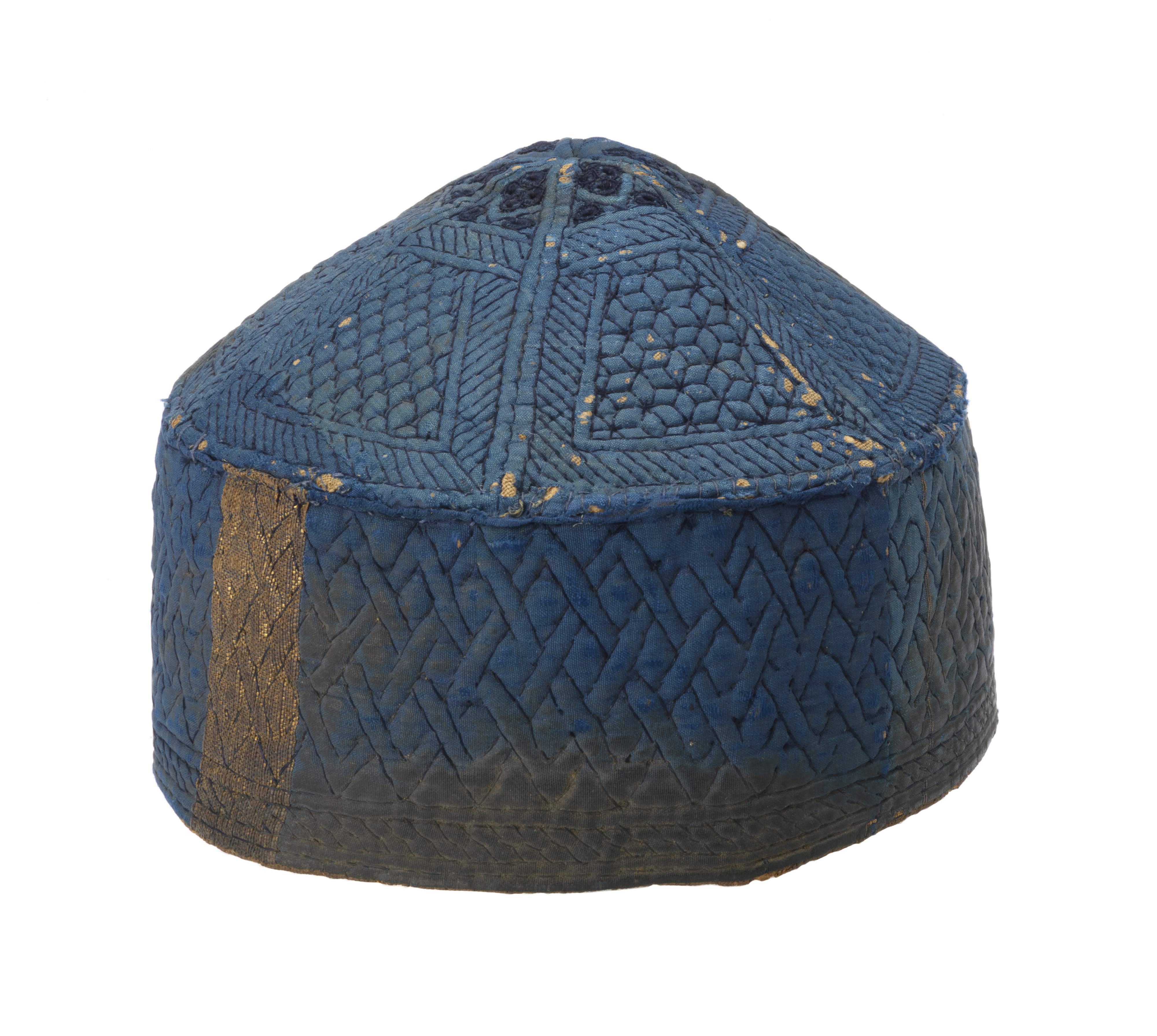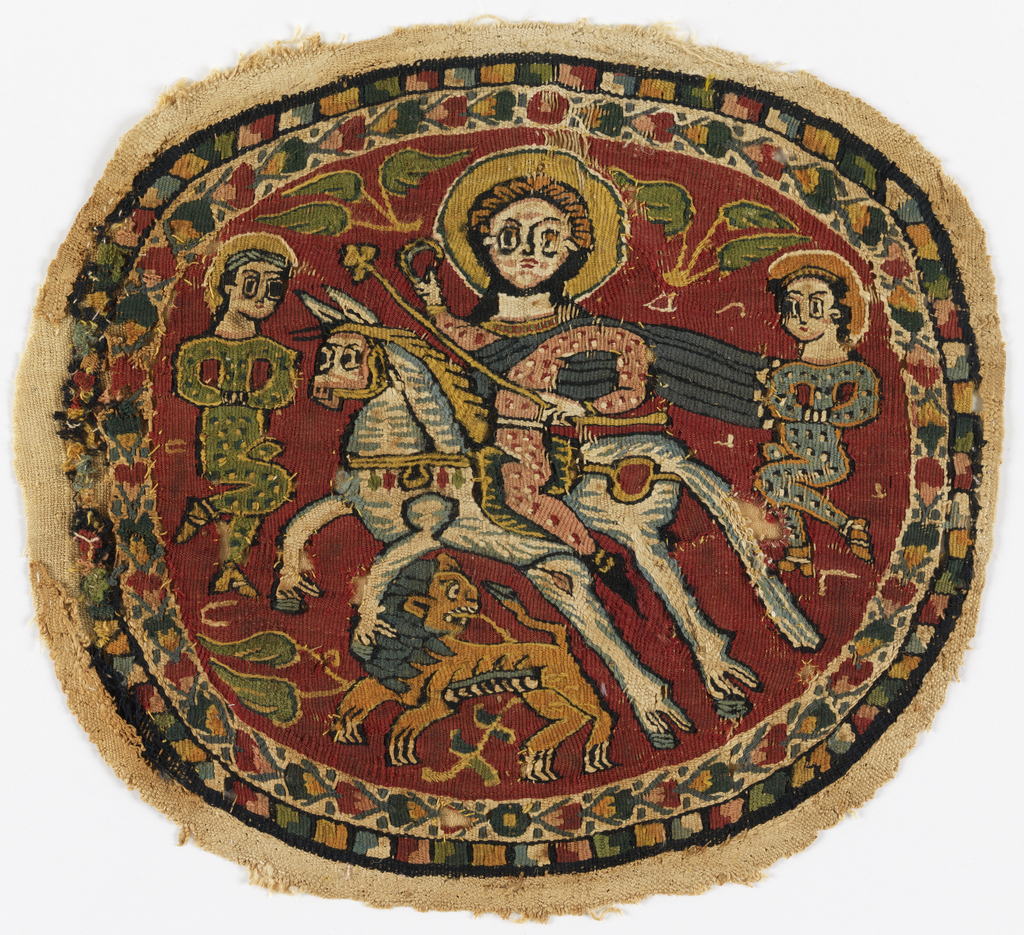This cap was used in Mamluk Egypt, a period during which textiles were perhaps the most precious items in Islamic society. Its finely-woven blue silk fabric is interlaced with ‘strap gold’: strips of membrane coated with real gold foil, making it among the most expensive and desired fabric types in Egypt at this time. The...
This band of tapestry weave features hunter iconography, a popular textile design in Egypt during the late Roman (third-fourth century C.E.) and Byzantine (fourth-sixth century C.E.) periods. Hunter motifs were popular for funerary use because, in the triumph over his prey, the hunter suggested that its wearer would similarly triumph over death. Hunter imagery could...
Knots were an apotropaic motif in late Roman Egypt, meaning that they were thought to protect against evil. The Greek word katadeo means both to physically bind and to spellbind. The presence of knot motifs on this burial pillow represents a hope for protection in death. Similar designs ornamented painted burial shrouds. While in late...
Egyptians in the Byzantine (fourth – seventh century C.E.) and early Islamic (seventh – tenth century C.E.) periods often decorated garments with woven designs. Most common among these designs were orbiculi (roundels on the shoulders and abdomen), segmenta (ornamental squares in the same places) and clavi (vertical stripes running from the inner shoulder past the...



